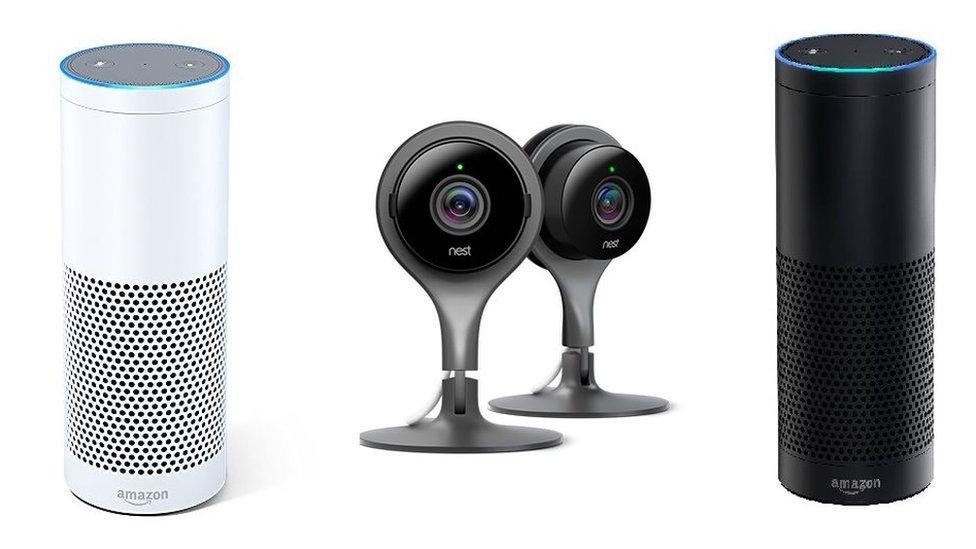Nest camera and Amazon Echo help catch home intruders
- Published

Intruders were caught out by the two smart home products
Google's Nest camera and Amazon's Echo speaker have both helped catch home intruders in the US, it has emerged.
Video recorded by the security cam revealed a Colorado landlord used his tenants' apartment without permission, to have sex.
Carlos Quijada-Lara has pleaded guilty to a trespassing charge and will be sentenced in September.
The speaker helped solve a separate case in which it recorded an alleged house-breaker's voice.
This was subsequently recognised as belonging to a child of the victim's neighbour, according to the .
It said the nine-year-old boy was now facing breaking-and-entering and larceny charges.
added that the unnamed boy had admitted to breaking into the home on three separate occasions.
It said that although the Echo speaker was itself stolen during one of the break-ins, its owner had been able to recover recordings it had made via her smartphone.
Cloud recording
The was the first to report the guilty plea in the Nest camera case, which the ┤¾¤¾┤½├¢ subsequently verified with a local court clerk.
Quijada-Lara is due to be sentenced on 22 September
Although Quijada-Lara had given his tenants a lease saying he had the right to enter their flat, prosecutors said he had still committed a felony.
Footage uploaded to the cloud by the camera revealed the landlord and another man had had sex on a bed in the apartment and then used a wedding dress belonging to the married couple to clean up afterwards.
The case generated local notoriety after some of the captured video was broadcast on .
"I opened up the camera and kind of had to like quit the program and, like, restart it again because I didn't really believe what I saw," the flat's tenant Logan Pierce told KKTV 11 News at the time.
"I guess the first thing that went through my mind was like complete and utter disbelief."
The growing popularity of smart home devices has been accompanied by concerns that they may put owners' privacy at risk.
But the latest two cases illustrate the potential for the tech to protect them as well.
- Published7 March 2017
- Published28 July 2017